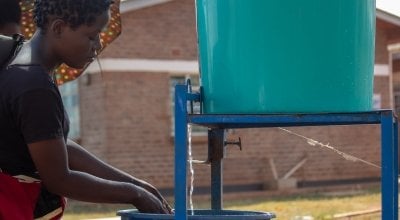
Knowledge Hub
How to make your own soap in just a few easy steps

Thankfully, people have slowed down on the stockpiling of Carex meaning soap is no longer the household equivalent of a Glastonbury ticket. However, if you’ve now perfected the sourdough and banana bread and are wondering what to do next, why not try your hand at your very own, homemade, natural soap? Kills boredom and germs – it’s a win-win.
One of the best things about making your own soap is that you can choose the ingredients and fragrances that you like. So, whether it’s a sprinkling of dried lavender, an ounce of oatmeal, or a pinch of exfoliating poppy seeds that you want to include to spruce up your soap, the choice is yours!
First things first, what is soap?
When oil and lye are combined and heated, the result is soap. This chemical reaction is called saponification. Without lye, saponification isn’t possible, so lye is necessary to create soap.
However, bear in mind when making soap that you have to be very careful with the lye. Lye is very caustic and can cause chemical burns just like any strong acid would. So make sure you protect yourself when making soap by wearing gloves and glasses throughout the process, and mix the soap outside or in a well-ventilated area.
This recipe is for an easy, slightly adapted, castile soap, suitable for beginner soap makers, and produces around 10 bars of soap.
What you’ll need
In addition to gloves and glasses, you’ll need:
- Stainless steel bowl
- Glass bowl
- Hand blender (or equivalent)
- Soap moulds
Also, please remember to use equipment that will not be used for cooking. No matter how well you clean it, it’s not worth the risk.
Ingredients:
- 500 g extra virgin olive oil
- 100 g coconut oil
- 10 g of an essential oil of your choice
- 80 g lye NaOH (Sodium hydroxide)
- 195 g water
10 steps to make your own soap
- Cover your work area with newspaper. Put your gloves and other protective wear on. Mix your lye into your water (not the other way around). Do this in a utensil that can handle heat, for example a stainless steel bowl (avoid other metals as they may react with the lye). Like we said earlier, it is best to do this step outside or in a well-ventilated area to avoid the fumes. Try not to breathe them in. Once the lye has dissolved, leave the mix to cool in an area where no children or pets have access to it.
- Mix your olive and coconut oils, ideally in a large glass bowl, with room for adding and mixing the other ingredients. If your coconut oil is in a solid state, it will make things easier for you to melt the coconut oil first. Otherwise, there is no need to heat your oils.
- After the lye mixture has cooled a bit (enough to easily handle the container), pour the lye solution into your oil mix. Stir by hand for a full five minutes - the mixture will lighten in colour and become thick. (You do not need to wait very long for the lye mixture to cool. You can just have it cooling while you measure out the oils and then immediately proceed to mix everything together.) When your mixture starts to thicken, after a few minutes, you are at the stage called ‘trace’. That is what you want!
- Mix in your essential oils or any other fun ingredients, like dried herbs, that you’re adding in. I personally like to use lavender (dried and essential oil), but there are so many different variations you can do depending on what you want from your soap.
- Pour the mixture into soap moulds (it's a good idea to oil the plastic containers beforehand to help prevent sticking) and cover with a plastic wrap. Set in an old towel and wrap it up. This will keep the residual heat in and start the saponification process.
- Set aside for at least 24 hours.
- After 24 hours, uncover and gently press on it to work out if you can easily unmould it. If it is too soft, wait a few more hours or days. You can put it in a cold place to help shrink it a little to help the process out, but don't wait too long or it will be too hard to easily cut into bars.
- Turn it out onto a piece of baking parchment (or equivalent) and cut into bars. Like the extra ingredients, you can decide how chunky you want them to be.
- Let the soap set for around a month, turning every day or two at first, and then every week later on. This is to let your soap dry out and harden, and is a really important step because it allows the saponification (aka. the soap making process) to complete.
- And enjoy!
*When you’re done making soap, always clean your equipment that has been exposed to lye. You can neutralise the lye with white vinegar, then wash the equipment as you normally would.






